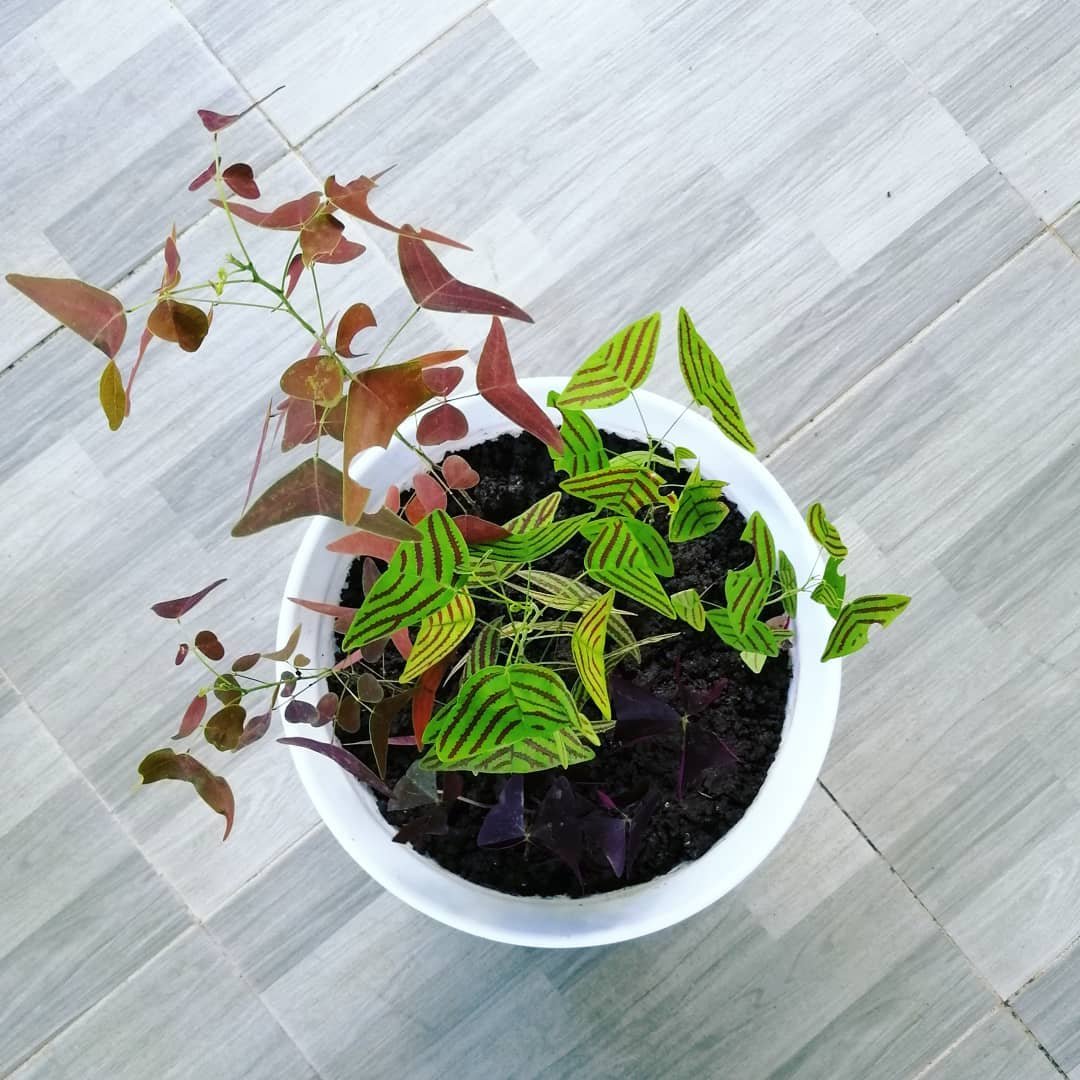Explore the allure of the Butterfly Wings plant with our detailed guide. Learn how to grow, care for and showcase this exotic beauty in your garden or home and enjoy its stunning foliage.
Have you ever come across a plant that looks like it’s straight out of a fairy tale? Meet the Butterfly Wings plant, a stunning tropical beauty that can add a touch of magic to any garden or indoor space. In this comprehensive guide, we’ll explore everything you need to know about growing and caring for this unique plant.
Here is a completed chart with detailed information about the Butterfly Wings plant:
| Category | Details |
|---|---|
| Botanical Name | Christia vespertilionis |
| Common Name | Butterfly Wings |
| Plant Zone | 10-11 (can be grown indoors in cooler zones) |
| Sun Exposure | Bright indirect light to full sun |
| Soil Type | Well-drained, loamy or sandy |
| Watering | Regular, allow soil to dry slightly between waterings |
| Growth Habit | Compact, bushy |
| Height/Spread | 1-2 feet tall, 1-2 feet wide |
| Special Features | Unique, wing-shaped foliage resembling butterfly wings, attractive indoor plant, low maintenance |
What is a Butterfly Wings Plant?

The Butterfly Wings plant, scientifically known as Christia obcordata, is a member of the legume family (Fabaceae). Native to Southeast Asia, this plant gets its common name from its distinctive trifoliate leaves that resemble butterfly wings. Each leaf typically has three heart-shaped leaflets arranged in a way that mimics a butterfly in flight.
Appearance and Characteristics
- Leaves: The most striking feature of the Butterfly Wings plant is its foliage. The leaves are typically variegated with shades of green, pink, and white, creating a mesmerizing pattern.
- Size: This plant usually grows to about 1-2 feet tall and wide, making it suitable for both garden beds and containers.
- Flowers: While the foliage is the main attraction, the plant does produce small, pea-like flowers in pink or purple hues.
Growing Conditions for Butterfly Wings Plant
To help your Butterfly Wings plant thrive,
you’ll need to provide the right growing conditions:
Light Requirements
Butterfly Wings plants prefer bright, indirect light. In their natural habitat, they grow under the canopy of taller trees, so they’re accustomed to filtered sunlight. When grown indoors, place them near a window with eastern or western exposure for optimal light conditions.
Temperature and Humidity
As tropical plants, Butterfly Wings thrive in warm, humid environments. They prefer temperatures between 60-80°F (15-27°C) and high humidity levels. If you’re growing them indoors, consider using a humidity tray or a small humidifier to increase moisture in the air.
Soil and Potting
These plants prefer well-draining, fertile soil. A mix of peat moss, perlite, and regular potting soil works well. Ensure your pot has drainage holes to prevent water from sitting around the roots.
Caring for Your Butterfly Wings Plant
Now that you understand the ideal growing conditions,
let’s dive into the care routine for your Butterfly Wings plant:
Watering
Proper watering is crucial for the health of your Butterfly Wings plant. They prefer consistently moist soil but are susceptible to root rot if overwatered.
Here’s a good watering routine:
- Water when the top inch of soil feels dry to the touch.
- Ensure water drains freely from the pot.
- Reduce watering slightly during winter months when growth slows.
Fertilizing
Feed your Butterfly Wings plant with a balanced, water-soluble fertilizer every 2-4 weeks during the growing season (spring and summer). Dilute the fertilizer to half strength to avoid burning the delicate roots.
Pruning and Maintenance
Butterfly Wings plants don’t require much pruning, but you can pinch back the growing tips to encourage bushier growth. Remove any yellow or damaged leaves to keep the plant looking its best.
Repotting
Repot your Butterfly Wings plant every 1-2 years or when it outgrows its current container. Choose a pot that’s 1-2 inches larger in diameter than the current one.
Common Problems and Solutions
While Butterfly Wings plants are generally easy to care for,
they can face some issues:
- Yellowing leaves: Often caused by overwatering or poor drainage. Adjust your watering routine and check the soil drainage.
- Leaf drop: Can be due to sudden temperature changes or low humidity. Ensure stable temperatures and increase humidity if needed.
- Pests: Butterfly Wings plants can attract common houseplant pests like spider mites or mealybugs. Treat with insecticidal soap or neem oil.
- Fading variegation: If the plant isn’t getting enough light, the variegation may fade. Move it to a brighter location, but avoid direct sunlight.
Propagating Butterfly Wings Plants
If you want to grow more Butterfly Wings plants,
you can propagate them through stem cuttings:
- Take a 4-6 inch cutting from a healthy stem, making sure it has at least two sets of leaves.
- Remove the lower leaves, leaving only the top set.
- Dip the cut end in rooting hormone (optional but helpful).
- Plant the cutting in a small pot with moist, well-draining soil.
- Cover the pot with a clear plastic bag to create a humid environment.
- Place in a warm location with bright, indirect light.
- Roots should develop in 3-4 weeks. Once you see new growth, you can remove the plastic bag.
Showcasing Your Butterfly Wings Plant
The unique beauty of the Butterfly Wings plant makes it a standout in any setting.
Here are some ideas for showcasing your plant:
- As a focal point: Place a well-grown specimen in a decorative pot as a centerpiece on a table or shelf.
- In a terrarium: The high humidity requirements make this plant perfect for closed terrariums.
- Mixed plantings: Combine with other tropical plants in a larger container for a lush, jungle-like display.
- Hanging baskets: The cascading growth habit of mature plants can look stunning in a hanging basket.
Frequently Asked Questions
Q: Is the Butterfly Wings plant toxic to pets?
A: While not highly toxic, it’s best to keep this plant out of reach of pets as ingestion may cause mild gastrointestinal upset.
Q: Can Butterfly Wings plants be grown outdoors?
A: Yes, in USDA zones 10-11. In cooler climates, they can be grown outdoors during summer and brought inside for winter.
Q: How long do Butterfly Wings plants live?
A: With proper care, these plants can live for several years, continually producing new foliage.
The Butterfly Wings plant is a true gem in the world of ornamental plants. Its unique, butterfly-like leaves and vibrant variegation make it a captivating addition to any plant collection. While it may require a bit more attention than some houseplants, the visual reward is well worth the effort.
Whether you’re an experienced plant enthusiast or a beginner looking to add some tropical flair to your space, the Butterfly Wings plant is sure to delight. With the right care and attention, you can enjoy its magical appearance for years to come.
Remember, gardening is as much about the journey as it is about the destination. Don’t be afraid to experiment and learn as you go. Happy growing!
For more gardening tips and plant care guides, visit usagardenhub.com

